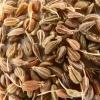Postoperative pain. How to relieve pain after surgery
Postoperative pain refers to acute pain syndromes, which is a powerful trigger of the surgical stress response, activating the autonomic nervous system and increasing the load, followed by dysfunction of almost all vital systems of the body: of cardio-vascular system(tachycardia, hypertension, arrhythmias, acute myocardial ischemia); respiratory system (decreased tidal volume and vital capacity of the lungs, impaired drainage function of the bronchi, atelectasis, pneumonia, hypoxemia); gastrointestinal tract(intestinal paresis, translocation of the intestinal bacterial flora); blood coagulation system (hypercoagulation, deep vein thrombosis of the lower extremities, PE); central nervous system(hyperactivation of the sympathetic nervous system, the formation of chronic postoperative pain syndrome). Thus, postoperative pain increases the load on almost all vital systems of the body, affecting the postoperative survival of patients.
Criteria for Chronic Postoperative Pain: pain develops after undergoing surgery; last at least 2 months; other causes of pain are excluded (neoplasm, chronic inflammation, etc.). The development of postoperative chronic pain syndrome is a serious medical and social problem, which, among other things, is of great economic importance. In this regard, the main task of increasing the effectiveness of postoperative pain relief at the present stage is the prevention of chronicity of acute postoperative chronic pain.
Pathophysiology postoperative pain. ( 1 ) The formation of pain syndrome includes, at the first stage, the formation of a primary nociceptive impulse (transduction) through electrical activation of free nerve endings of afferent axons located in tissues, which in turn were damaged due to surgical intervention. ( 2 ) Further, the transmission of the arisen nociceptive impulses is carried out along the afferent axons from the damage zone to the posterior horns spinal cord(transmission), ( 3 ) where processing (suppression) of nociceptive impulses (modulation) occurs. ( 4 ) Processing of nociceptive information is also carried out in the cerebral cortex, which results in the formation of sensations and emotional-affective components of pain (perception). These processes can lead to the formation of a zone of primary hyperalgesia (peripheral sensitization) in the area of damage, and then to the formation of secondary hyperalgesia, the area of which is located not only around the area of damage, but also at a distance from it. In the pathogenesis of primary hyperalgesia (primary sensitization) great importance is assigned to bradykinin, which can provide both direct and indirect action on nociceptors, stimulating the synthesis of inflammatory mediators. Secondary hyperalgesia develops as a result of the activation of the central mechanisms of sensitization of nociceptive neurons located in the posterior horns of the spinal cord. In particular, their excitability, spontaneous electrical activity, and sensitivity to mechanical stimulation increase. The development of secondary hyperalgesia not only enhances the intensity of acute pain syndrome, but is also the starting point for its chronicity.
Treatment... Tasks of postoperative pain relief: ( 1 ) improving the quality of life of patients in postoperative period; (2 ) acceleration of postoperative functional rehabilitation; ( 3 ) frequency reduction postoperative complications; (4 ) accelerating the discharge of patients from the clinic. The success of pain relief largely depends on the degree of patient awareness and their belief in the competence of the doctor. In this regard, it is advisable to provide patients with detailed information about postoperative pain and how to deal with it.
General principles drug treatment of pain syndromes: (1 ) a unified tactic for the treatment of pain syndromes is applied, based on strict compliance with the prescribed anesthetic agents, depending on their intensity, which is established on a simple scale: 0123 - four levels of pain intensity; ( 2 ) pain treatment should be, if possible, etiopathogenetic (aimed at eliminating the causes, causing pain), and not symptomatic; ( 3 ) the pain reliever prescribed by the doctor for the patient should be adequate to the intensity of pain and safe for the patient (it should eliminate pain without causing serious side effects); ( 4 ) monotherapy with drugs of any pain syndromes (including the most severe) should not be used; in order to increase the effectiveness and safety of pain relief, the drug should always be combined with non-narcotic components, selected in accordance with the pathogenesis of a particular pain syndrome.
Regarding the first principle of drug treatment of pain syndromes, the following should be explained other: mild pain syndrome (1 point) should be eliminated with the help of non-narcotic analgesics; with moderate pain (2 points), it is advisable to prescribe non-narcotic opioid analgesics in combination with non-steroidal anti-inflammatory drugs (NSAIDs) and non-narcotic analgesics; with strong (3-4 points) pain syndromes, only true narcotic drugs should be prescribed (morphine, promedol, etc.).
Drug treatment of pain syndromes depending on the volume of surgery and the severity of postoperative pain syndrome. ( 1 ) With minor surgical interventions (opening of an abscess, removal of benign soft tissue formation, curettage of the uterine cavity, operations in outpatient dentistry, minor urological, traumatological operations, etc.), adequate pain relief is achieved by using non-narcotic analgesics in medium or high therapeutic doses; in case of insufficient anesthesia, it is advisable to combine a non-narcotic analgesic with a weak opioid analgesic. ( 2 ) In case of postoperative pain syndrome of moderate intensity after large incomplete and small volume of abdominal operations (radical mastectomy, appendectomy, abdominal hysterectomy, etc.), one of the opioid analgesics of moderate strength in combination with a non-narcotic analgesic should be used for adequate pain relief. ( 3 ) With a strong postoperative pain syndrome caused by an extensive abdominal surgical intervention, the use of a powerful narcotic analgesic is required, which must also be combined with a non-narcotic analgesic: in case of mild pain, non-narcotic analgesics are prescribed (stage 1), with an increase in pain to moderate in the second stage, they pass to weak opioids, and with a strong postoperative pain syndrome at the third stage - to strong opiates.
There is currently no ideal analgesic or treatment for acute postoperative pain... The problem of the adequacy of postoperative pain relief can be solved only by implementing the following concepts in the clinic: ( 1 ) the concept of preventive analgesia and ( 2 ) the concept of multimodal analgesia.
Preventive analgesia concept is to prevent the development of postoperative pain syndrome or to minimize its intensity by starting treatment measures before the start of surgery. To implement this concept, non-narcotic analgesics, NSAIDs and mixed-action drugs (with the presence of opioid and non-opioid components, for example, tramadol) are used in the pharmacotherapy of postoperative pain. When applied, consciousness, hemodynamics and respiration are not suppressed, autonomic reactions are stabilized.
Multimodal analgesia concept provides for the simultaneous appointment of two or more analgesics and / or methods of pain relief with different mechanisms of action and allowing to achieve adequate analgesia with a minimum of side effects. ( ! ) Multimodal analgesia is currently the method of choice for postoperative pain relief, its basis is the appointment of non-opioid analgesics (NSAIDs and paracetamol), which in patients with moderate to high intensity pain is combined with the use of opioid analgesics and methods of regional analgesia.
The main objectives of the use of analgesics in the postoperative period are: elimination of pain caused by pain, creation of psychological comfort and improvement of the quality of life of patients in the postoperative period; acceleration of postoperative functional rehabilitation; reduction in the incidence of postoperative complications; reduction of hospitalization time and cost of treatment.
It should be noted that at present, in most developed countries, inadequate postoperative pain relief is considered a violation of human rights and is carried out in accordance with accepted national and international standards. In our country, many clinics have introduced a formulary system for using medicinal preparations certain groups, the feasibility of the use of which is confirmed by evidence-based medicine data, as well as due to the needs and characteristics of a particular medical institution. Many authors believe that all surgical units, as well as departments of anesthesiology, resuscitation and intensive care should have in their arsenal only those analgesics and anesthetics, the effectiveness and safety of prescription of which is confirmed by evidence I (systematic reviews and meta-analyzes) and II (randomized controlled trials with certain results) level (Table 1).
Table 1. Drugs, the use of which for postoperative pain relief is justified by evidence-based medicine data (Acute Pain Management: Scientific Evidence, 2- nd edition, 2005).
|
Group |
Drugs |
Doses, route of administration |
|
Non-opioid analgesics, NSAIDs |
Diclofenac Celecoxib (Celebrex®) |
75 mg (150 mg daily), i.m. 400 mg + 400 mg / day |
|
Non-opioid analgesics, others |
Paracetamol (Perfalgan®) |
1 g (4 g) IV infusion over 15 minutes |
|
Opioid analgesics, strong |
Morphine |
5-10 mg (50 mg), i / v, i / m |
|
Opioid analgesics, weak |
Tramadol (Tramal®) |
100 mg (400 mg), i / v, i / m |
|
Adjuvant drugs |
0.15-0.25 mg / kg i.v. |
|
|
Local anesthetics |
Lidocaine 2% |
(800 mg daily) * |
* infiltration of the wound edges, interpleural administration, prolonged blockade of peripheral nerves and plexuses, prolonged epidural analgesia.
The world experience of postoperative pain relief allows us to highlight the following main modern trends in the fight against PBS:
Widespread use of non-opioid analgesics - non-steroidal anti-inflammatory drugs (NSAIDs) and paracetamol; in various European clinics, the frequency of prescribing these drugs as the basis for postoperative pain relief ranges from 45 to 99%;
Limiting the use of opioid analgesics, especially the intramuscular version of their administration, due to the low efficacy and a significant number of side effects of this technique;
The widespread use of high-tech methods of pain relief - prolonged epidural analgesia through the infusion of local anesthetics, as well as patient-controlled intravenous or epidural analgesia.
The multimodal nature of postoperative pain relief, i.e. the simultaneous administration of several drugs or methods of pain relief, capable of affecting various mechanisms of pain syndrome formation.
The duration of postoperative pain relief is quite variable and depends both on the intensity of pain afferentation and, consequently, on the trauma of the surgical intervention, and on the patient's individual tolerance to pain. The need for targeted relief of PBS arises, as a rule, during the first 4 days of the postoperative period (Table 2).
Table 2. The need for anesthesia after operations of various volume.
It is clear that there is currently no ideal analgesic or treatment for acute postoperative pain. This is also related to the very presence in clinical practice of a whole list of possible methods for stopping PBS (Table 3). Nevertheless, even in the presence of a whole arsenal of means and methods of postoperative analgesia, from the standpoint of common sense it would be logical to argue that the prevention of nociceptive stimulation leading to the development of pain syndrome, first of all, the introduction of NSAIDs, is much easier and requires less drug costs than the fight with already developed severe pain. So, back in 1996 in Vancouver, the method of preventive (prophylactic) analgesia with perioperative administration of NSAIDs was recognized as a promising direction in pathogenetic therapy pain syndromes and is widely used by progressive clinics at the present time.
Table 3. Methods and means of postoperative pain relief.
|
1. Traditional opioid administration: intramuscular injections on demand. 2. Opioid agonist / antagonist drugs: a) parenteral administration of opioids: intravenous bolus, long-term intravenous infusion, patient-controlled analgesia. b) non-parenteral opioid administration: buccal / sublingual, oral, transdermal, nasal, inhalation, intra-articular 3. Systemic non-opioid analgesics: a) non-steroidal anti-inflammatory drugs b) acetaminophen (paracetamol) 4. Methods of regional anesthesia: a) epidural administration of opioids; b) non-steroidal anti-inflammatory drugs; c) the introduction of a2 -adrenergic agonists:
5. Non-pharmacological methods:
6. Combined use of the presented methods |
Below are the main means and methods of anesthesia used in a modern surgical clinic from the standpoint of balancing their effectiveness and safety.
Opioid analgesics.
This group drugs has been considered the treatment of choice for PBS relief for decades. However, opioid analgesics are by no means the gold standard in the treatment of patients with acute pain at this time. Nevertheless, according to the estimates of a number of domestic and foreign experts, the effectiveness of pain relief with the traditional prescription of opioids as monotherapy does not exceed 25-30%. However, the gradual alienation from excessive adherence to opioids in the postoperative period is associated not so much with their lack of effectiveness, but with a number of serious side effects arising from their use (Table 4).
The main side effect associated with the use of natural opioids (morphine, promedol, omnopon) is depression of the respiratory center. The main problem, however, is that the effective analgesic dose is often close to that which causes respiratory depression. In addition to respiratory depression, an increase in the dose is limited by an increase in the frequency of other side effects, such as depression of consciousness, itching, nausea and vomiting, impaired intestinal motility, and difficulty in urinating independently in the postoperative period. It should be noted that it is in abdominal surgery that all the negative effects of opioids are manifested to a greater extent than in other areas of surgery. This is primarily due to their negative effect on the motility of the gastrointestinal tract, which occurs (albeit to a lesser extent) with the epidural administration of small doses of morphine. The latter circumstance was one of the reasons for the decrease in the popularity of postoperative epidural analgesia with the use of hydrophilic opioids observed in recent years.
From a pharmacodynamic point of view, opioid analgesics are agonists or antagonists different types opioid receptors of the central nervous system (mu-, delta-, kappa-). Opioid group drugs activate the endogenous antinociceptive system (central analgesia), but do not affect the peripheral and segmental non-opioid mechanisms of nociception and do not prevent central sensitization and hyperalgesia. Attempts to increase the effectiveness of pain relief and reduce the frequency of side effects of opioid analgesics are based on varying the methods of their administration (including in one patient): intravenous, intramuscular, epidural, transdermal, sublingual, rectal. The most common, but also the most insecure and least effective way The administration of opioids is intramuscular injection. This technique most often leads to inadequate pain relief - more than 60% of patients note the unsatisfactory quality of postoperative analgesia. The reasons for this lie in the fact that all patients are administered fixed doses at standard time intervals, without taking into account the individual variability of pharmacokinetics; often opioid injections are made at long intervals, that is, when the pain syndrome is already pronounced and its relief, by definition, becomes ineffective. It is with the intramuscular administration of opioids that respiratory depression most often develops, possibly associated with the cumulation of the drug.
Table 4. Opioid analgesics for relief of postoperative pain syndrome.
Significantly fewer side effects are caused by the use of the semi-synthetic opioid tramadol. Tramadol hydrochloride is an analgesic that mediates the analgesic effect both through opioid receptors and by inhibiting the noradrenergic and serotonergic mechanisms of transmission of pain impulses. Tramadol is characterized by a relatively high bioavailability and long-term analgesic effect. However, the analgesic effect of tramadol is lower than that of morphine and promedol. A significant advantage of tramadol over other opioid analgesics is the extremely low degree of addiction and minimal narcogenic potential of this drug. Unlike other opioids, in equianalgesic doses, tramadol does not cause constipation, does not inhibit blood circulation and respiration. Nevertheless, tramadol is also characterized by the development of nausea, dizziness, and, in rare cases, vomiting.
One more should be noted important aspect limiting the use of opioid analgesics in domestic clinical practice. The use of opioid analgesics for postoperative pain relief in Russian Federation strictly regulated by the existing orders of the governing bodies of health. For example, order No. 257 of the Moscow Health Department of 2004 determines, in particular, the standard for the consumption of opioid drugs in ampoules per 1 bed in various surgical departments per year. Prescribing an opioid drug as in surgical department and in the intensive care unit in most health care facilities is accompanied by a colossal amount of formal difficulties, which often leads to the refusal of medical personnel from using these drugs, even when it is necessary to prescribe opioids. By those for the same reasons modern method the use of opioids - patient-controlled analgesia, to the greatest extent focused on the individual needs of the patient in pain relief - is not widespread in Russia.
Non-opioid analgesics.
The term "non-opioid analgesics" denotes a group of drugs that differ in chemical structure, pharmacodynamics and, accordingly, the mechanism of pain relief, used to relieve PBS with parenteral, less often by oral route introduction. The drugs of this group, used both in a monovariant and as a means of adjuvant therapy, have different analgesic potential and a set of side effects (Table 5).
Table 5. Non-opioid analgesics for postoperative pain relief.
|
Class |
Drugs |
Features of therapy |
Side effects |
|
NMDA receptor antagonists |
It is used as an adjuvant in the administration of opioids. Small doses of ketamine are characterized by an opioid-sparing effect, improving the quality of pain relief |
When used in small doses, they are not expressed. Retains the side effects of opioids. |
|
|
Anticonvulsants |
Garbapentin |
Used as an adjuvant in complex therapy acute postoperative pain. Reduces the need for both opioid and non-opioid analgesics. |
Dizziness, drowsiness, peripheral edema. |
|
Protease inhibitors |
Transamin |
Inhibition of the synthesis of pain mediators at the transduction stage, used as a means of adjuvant therapy for PBS |
Disorders in the hemostasis system (hypocoagulation) - postoperative bleeding. |
|
Central α-adrenergic agonists |
Clonidine |
Effects on transmission and pain modulation. Adjuvant for opioid analgesia. |
Hypotension, bradycardia, mental disorders. |
|
Benzodiazepines |
Diazepam, etc. |
Combination therapy with phenazepam and tizanidine reduces the severity of phantom pain. |
Drowsiness, dizziness, mental disorders |
From the data presented, it becomes obvious that the non-opioid analgesics listed in the table are used only as a possible addition to basic opioid therapy; the use of these drugs for the relief of PBS in a monovariant is not practiced.
Formally, non-opioid analgesics also include non-steroidal anti-inflammatory drugs (NSAIDs) and acetaminophen (paracetamol). However, due to the significant demand in the modern surgical clinic, these drugs are now considered as separate subclasses of drugs for the relief of PBS.
Paracetamol.
Despite the fact that acetaminophen (paracetamol) has more than half a century of use as an analgesic and antipyretic, the exact mechanism of action of this drug is still not known. The presence of a central mechanism of action of paracetamol is assumed, including: suppression of the activity of type 2 cyclooxygenase in the central nervous system, which is associated with the prevention of the development of secondary hyperalgesia; suppression of the activity of type 3 cyclooxygenase, the existence of which is assumed and which, apparently, has a selective sensitivity to paracetamol; increased activity of the descending inhibitory serotonergic pathways at the stage of pain modulation.
The possibility of using paracetamol as a means to combat PBS appeared with the introduction in clinical practice dosage form of this drug for intravenous infusion (Perfalgan®). Intravenous administration paracetamol is used, as a rule, as a basic component of multimodal postoperative analgesia in various fields of surgery: traumatology, gynecology, dentistry. Analgesic effect of 1 g of intravenous paracetamol with 10 mg of morphine, 30 mg of ketorolac, 75 mg of diclofenac and 2.5 mg of metamizole. Currently, in European clinics, 90-95% of patients receive paracetamol in the postoperative period. Usually, the drug is administered intravenously during the operation, about 30 minutes before the end of the operation, which ensures a calm, painless awakening. Paracetamol is re-injected after 4 hours, and then every 6 hours, up to 4 g per day. It should be emphasized that the analgesic effect of paracetamol is fully manifested only when it is used as a component of multimodal analgesia, that is, when it is combined with other analgesics, including in the combination of Zaldiar® and Forsodol®, which contain paracetamol and tramadol (the drug is available only in tablet form, which often makes its use in the immediate postoperative period impossible). According to domestic experts and, based on their own observations, the use of intravenous paracetamol in a monovariant does not effectively relieve PBS.
A potentially dangerous side effect of paracetamol is hepatotoxic and nephrotoxic effects, which can occur when the dose is exceeded 4 g / day, especially if the patient has an initial dysfunction of the liver and kidneys. Restrictions on the use of paracetamol are: hepatocellular failure with laboratory manifestations (increased levels of transaminases), renal failure, alcoholism, alimentary insufficiency, dehydration.
Local anesthetics.
The most important task of multimodal analgesia is to interrupt the afferent flow of nociceptive stimuli from peripheral pain receptors in organs and tissues to the segmental structures of the central nervous system (posterior horns of the spinal cord). This task can be successfully solved using different methods regional and local analgesia. The emergence of modern local anesthetics (bupivocaine, ropivocaine), as well as the detailed elaboration of the technique of regional blockades, played an important role in the expansion of the application of methods of regional analgesia.
Epidural analgesia occupies a key position among all regional methods of postoperative analgesia. During this procedure, into the epidural space at the level of the thoracic or lumbar a catheter is placed in the spine, through which local anesthetics are injected either by bolus or by continuous infusion. Epidural anesthesia is both a means of providing analgesia during the operation (including in a monovariant) and a means of stopping PBS. Numerous studies have shown a fundamentally higher efficacy of prolonged postoperative epidural analgesia compared to systemic administration of opioid analgesics. As noted above, opioid analgesics themselves can also be used to provide epidural anesthesia. It is known that epidural administration of local anesthetics and opioids significantly exceeds the analgesic effect of using these drugs separately. However, epidural opioid administration alone is fraught with serious side effects ranging from respiratory depression to severe itchy skin... Today it is generally accepted that the benefits of epidural administration of opioid analgesics in abdominal surgery do not outweigh the risk of complications of the epidural technique itself compared to parenteral administration of similar drugs.
In addition to the analgesic effect itself, the positive effect of postoperative prolonged epidural analgesia consists in interrupting the descending sympathetic efferent impulses, which results in an improvement in visceral blood flow (activation of reparative processes in the intervention area), an increase in the activity of the parasympathetic nervous system (resolution of paresis of the digestive tube).
In terms of evidence-based medicine (Acute Pain Management: Scientific Evidence, 2nd edition, 2005), the benefits of prolonged epidural analgesia include: better pain relief than parenteral opioids; improved gas exchange rates and a decrease in the incidence of postoperative pulmonary complications compared with opioid analgesia; accelerating the recovery of gastrointestinal tract function after abdominal surgery and reducing the incidence of local complications.
Nevertheless, epidural anesthesia has a number of significant limitations. By itself, epidural anesthesia is a complex invasive procedure, potentially dangerous in terms of development as local (infectious process, damage to nerve roots, arachnoid vessels, hard meninges) and systemic complications (respiratory depression, cardiotoxic effects, arterial hypotension). In this regard, carrying out epidural anesthesia requires special skills from an anesthesiologist and constant monitoring of the patient's condition in the intensive care unit, less often in the surgical department.
In recent years, the technique of long-term infusion of local anesthetics into the cavity of an operating wound has become increasingly popular. Several studies have shown that continuous infusion of local anesthetics for 24-48 hours through a wound catheter can improve the quality of pain relief and reduce the need for opioid analgesics. The works of domestic authors have shown that prolonged local anesthesia of an operating wound due to resorption of local anesthetic and its presence in plasma in low concentrations is capable of exerting a systemic anti-inflammatory effect. As in the case of epidural analgesia, the effect of local anesthetics in this case is due to the blockade of not only nociceptive pathways, but also sympathetic innervation... Speaking about the use of prolonged local anesthesia of an operating wound, it should be noted that this technique is currently at the stage of clinical testing and its widespread introduction initially limits the obvious risk of exogenous wound infection and the real danger of systemic toxic effects of local anesthetics (arterial hypotension, arrhythmias, respiratory depression ) due to their resorption by tissues.
Multimodal perioperative analgesia.
From the above characteristics and, more importantly, the shortcomings of the means and methods for stopping PBS, the obvious conclusion follows that at present there is no ideal analgesic or method for treating acute postoperative pain. However, it is quite possible to approach a solution to the problem of the adequacy of postoperative analgesia by implementing in the clinic the concept of multimodal perioperative analgesia, which provides for the simultaneous administration of two or more analgesics and / or methods of pain relief with different mechanisms of action and allowing to achieve adequate analgesia while minimizing side effects before, during and after surgery (see fig.).
Multimodal analgesia is currently the treatment of choice for postoperative pain relief. Its basis is the appointment of non-opioid analgesics (primarily NSAIDs), which in patients with moderate to high-intensity pain is combined with the use of opioid analgesics, non-opioid analgesics and methods of regional analgesia. The choice of this or that scheme of multimodal analgesia is determined primarily by the trauma of the surgical intervention (Table 6).
Table 6. Variants of schemes of multimodal perioperative analgesia focused on the trauma of surgical interventions.
|
Operations |
Before surgery |
During the operation |
After operation |
|
Low trauma |
NSAIDs intravenously, intramuscularly or per os 30-40 minutes before the start of the operation |
General and / or regional anesthesia (infiltration to spinal) |
NSAIDs + paracetamol IV 2-3 r / day |
|
Medium trauma |
General and / or regional anesthesia (from blockade of peripheral nerves and plexuses to combined spinal-epidural). 30 minutes before the end of the operation paracetamol 1 g IV, infusion within 15 minutes |
NSAIDs + paracetamol IV 3-4 r / day ± opioid analgesic (tramadol i / m or i / v 2-3 r / day or promedol 2 r / day i / m) |
|
|
High injury rate |
General anesthesia with the obligatory use of regional (epidural is preferred) as a component. It is advisable to include a ketamine bolus of 0.25 mg / kg in the anesthesia induction regimen 4. 30 minutes before the end of the operation, paracetamol 1 g IV, infusion within 15 minutes |
Prolonged epidural analgesia (ropivacaine ± fentanyl) + NSAIDs 2 times / day + paracetamol IV 2-3 times / day |
Postoperative pain is a complex response to tissue injury during the procedure, which stimulates central nervous system hypersensitivity. The result is pain in the involved areas, including even those not affected by the surgical procedure. Postoperative pain can occur after any surgical procedure, be it minor dental surgery or triple heart bypass surgery. Postoperative pain increases the likelihood of post-surgical complications and prevents the patient from recovering and returning to normal life.
Why postoperative pain occurs
There are two pains different forms: physiological and clinical.
- Physiological pain comes and goes. It is the result of high intensity sensations. It often acts as a safety mechanism to alert a person (for example, in the event of burns, scrapes, or cuts).
- Clinical pain on the contrary, it is characterized by increased sensitivity to painful stimuli around the localized area, and is also felt in neighboring, unaffected areas. During surgery, tissue and nerve endings are injured, resulting in pain in the cut. This injury overloads the pain receptors that send messages to the spinal cord. The resulting central sensitization is a type of post-traumatic spinal cord stress that interprets any stimulation as unpleasant. This is why a person may feel pain when moving or physically touching in places away from the surgical site.
Pain after surgery is handled differently
People endure postoperative pain on an individualized basis. Doctors note that some patients experience severe pain in the postoperative period, which requires large doses of pain medications, while others cope well with it without a lot of medication. For this discrepancy, several theories have been put forward regarding, for example, differences in body size or emotional well-being. Recently, biological evidence has been found that indicates the birth of individuals with different thresholds for the perception of pain. Scientists have found that changes in the amino acid of one of the genes cause different levels of pain perception. This gene encodes an enzyme associated with brain neurotransmitters,.
How to ease the postoperative period
 The goal of postoperative pain management is to reduce the amount of pain the patient experiences after the procedure. New research has shown that preventing overuse of the nervous system can lead to a less painful postoperative period. Prepared patients may require fewer drugs and recover faster. In addition, with improved, less invasive surgical techniques, many patients do not have to stay in the hospital at all after surgery.
The goal of postoperative pain management is to reduce the amount of pain the patient experiences after the procedure. New research has shown that preventing overuse of the nervous system can lead to a less painful postoperative period. Prepared patients may require fewer drugs and recover faster. In addition, with improved, less invasive surgical techniques, many patients do not have to stay in the hospital at all after surgery.
Several non-medical methods can help reduce postoperative pain:
- Knowing about the surgical procedure and its consequences can help reduce stress, which greatly affects the perception of pain. The patient knows what to expect and therefore the fear of the unknown disappears.
- Meditation and deep breathing techniques can also reduce stress. These methods reduce arterial pressure and increase oxygen levels, which are critical to recovery.
- Hypnosis before and after surgery can calm and dull pain perception.
Other methods for relieving postoperative pain
Multimodal analgesia uses more than one method of treating pain after surgery. Several methods can actually reduce the amount of medication needed to relieve it and minimize side effects. The use of preoperative, surgical and postoperative methods allows the patient to control pain after surgery. Before any surgical procedure, the patient should speak with a doctor, surgeon and, if possible, an anesthesiologist in order to get a complete understanding of the procedure and what to expect immediately after surgery. The patient should not eat or drink before the operation. This helps to minimize the side effects of general anesthesia and pain medications, such as nausea and vomiting.
Subscribe to our Youtube channel !
The most important principle in the approach to managing postoperative pain is multimodality. That is, a combination of several methods of pain relief and a combination of several drugs. The assessment of the pain syndrome is also important. Currently, the most common is the so-called VAS - a visual analogue scale, which allows you to assess the intensity of pain experienced by a person and prescribe the most adequate pain relief. According to this scale, the patient should mark a point on a piece of paper 10 cm long, which, according to his impressions, corresponds to pain. The closer the point is to the end of the scale, the greater the pain.
Multimodal pain relief includes the following components:
- adequate premedication - preoperative administration of painkillers and sedatives;
- combination of general anesthesia with regional anesthesia - if possible, an epidural catheter is installed for postoperative prolonged anesthesia during chest surgery, abdominal cavity, small pelvis, lower limbs... In operations on the upper extremities, catheters are inserted into the nerve plexuses;
- in the postoperative period, NSAIDs, paracetamol and, if necessary, narcotic drugs are prescribed - a combination of these drugs can reduce the dose of each of them individually by 30-40%.
Important! The question of the duration of the appointment of painkillers should be decided individually, together with the patient: someone can refuse drugs the next day after the operation, while someone has to drink painkillers for 1-2 weeks.
Side effects of pain medications
Pain medications can have unpleasant side effects. In many people, they cause nausea, vomiting and impaired mental functioning. NSAIDs can cause kidney failure, intestinal bleeding, and liver dysfunction. Some drugs are associated with acute renal failure... Early screening and close monitoring can prevent most of these problems.
Denial of responsibility: The information provided in this article on postoperative pain is intended to inform the reader only. It cannot be a substitute for the advice of a healthcare professional.
Laparoscopic surgery is a common method surgical treatment a large number of diseases of the abdominal organs. At the same time, laparoscopy rarely leads to the development of early and late complications. However, there are exceptions, such as the occurrence of pain after laparoscopy. The patient may complain that the right side hurts, under the ribs or even the collarbone, which is associated with the peculiarities of the surgical intervention. Understanding the causes of pain syndrome allows you to choose the optimal therapy and get rid of unpleasant complications.
Patient after laparoscopy
Laparoscopic operations
Laparoscopic interventions are characterized by the introduction of a laparoscope and additional manipulators into the abdominal cavity through small incisions on the anterior abdominal wall. Such access makes it possible to reduce the invasiveness of manipulation, to ensure quick discharge of the patient from the hospital, while the effectiveness of treatment remains at a high level.
When can laparoscopy be used? Doctors prescribe this operation for the following conditions:
- Acute appendicitis, cholecystitis and other emergency abdominal surgery.
- Single and multiple uterine fibroids.
- Adhesion process on the fallopian tubes or their obstruction.
- Ovarian cysts, etc.
Complications of laparoscopy are a rare event that can often be missed by doctors and by the patient himself due to the mild severity of symptoms.
In addition, laparoscopy can be used as a diagnostic method when making a diagnosis using standard procedures is difficult. In this case, the attending physician gets the opportunity to visually assess the condition of the abdominal organs and identify the pathological process.
Pain during the procedure
Correct conduct of anesthetic aid allows you to completely avoid pain during the operation. Typically, either general anesthesia (endotracheal or intravenous) or spinal anesthesia can be used.
The blockade of the conduction of nerve impulses from the abdominal organs and from its membranes, allows you to prevent the appearance of pain syndrome during manipulations on them, which is very important for maintaining the function of vital systems (cardiovascular and respiratory).
In this regard, the patient can get sick only after laparoscopy of the ovarian cyst or any other manipulation, but not during its implementation. If the patient says that the lower back or any other area hurts during the operation, then most likely the reason for this is not directly related to the laparoscopy itself. A number of patients complain that their legs ached. A similar condition may be associated with a reflex spasm of the vascular bed or irritation of nerve fibers.
Pain after surgery
Complications after laparoscopic procedures are very rare, however, it is still possible. If a patient complains that his stomach hurts after laparoscopy, then this may be due to various reasons. As a rule, the localization of pain is of great importance.
Stomach ache

The doctor palpates the abdomen
Abdominal pain after laparoscopy can occur for a wide range of reasons, from complications of the underlying disease, and ending with the mistakes of the operating surgeon.
If the pain is localized in the right side, or the lower abdomen hurts, then this may be due to trauma to the delicate sheets of the peritoneum and the onset of inflammatory and adhesive process... In such cases, it is necessary to prescribe drug therapy and constant monitoring. Pain in the left side or under the ribs can also be associated with these reasons. The attending physician needs to be very careful: if a woman has pain in the lower abdomen, then you need to be sure that this is not a manifestation of menstruation. Pain in the upper abdomen may be associated with stomach diseases, and not with the intervention.
If the patient has a backache, then this may be a manifestation of osteochondrosis, however, it is important not to miss another pathology that manifests itself in a similar way.
If pain syndrome develops in a patient 2-4 days after the operation, and at the same time the temperature rises, then possible reason- the addition of a bacterial infection and the development of purulent inflammatory process... In this case, the abdomen after laparoscopy constantly hurts, which is a serious discomfort for patients. All patients with similar phenomena are shown antibiotic therapy.
Pain in the area of postoperative sutures

If over time the pain in the suture area intensifies, then this is a reason to consult a doctor.
Immediately after the end of anesthesia, unpleasant sensations in the skin may appear - the wounds ache, and pain occurs. As a rule, a similar consequence is observed in many patients, but it goes away within a few hours or days against the background of dressings and the use of drugs.
Why do these pains appear? During the operation, the doctor must make incisions in the anterior abdominal wall for the introduction of all instruments. As a result, soft tissues are traumatized with the development of a small inflammatory process in them. Adequate dressings and the use of medication can quickly cope with discomfort. If the wound got sick a few days after the operation, then this may be due to the addition of an infection, which requires the appointment of additional treatment.
Discomfort in the shoulder and chest
Usage carbon dioxide to "inflate" the abdominal cavity during laparoscopy can lead to an excessive increase in intra-abdominal pressure with compression of the diaphragm and organs chest... Within a few days after the operation, the patient begins to feel discomfort and pain in the chest, in the area of the collarbones, neck and shoulders.
Such sensations persist in patients for several days, after which they completely disappear without any consequences. If such pains after laparoscopy do not go away within 5-7 days, then you need to apply for medical help.
Pain in the mouth and throat

Sore throat after endotracheal anesthesia is quite common.
As a result of the introduction of an endotracheal tube to ensure general anesthesia possible irritation and damage to the mucous membrane of these localizations. Such pains are insignificant and do not cause significant discomfort to the patient.
Organization of pain relief after laparoscopy
It is not recommended to prescribe pain medications after laparoscopic intervention, as this can hide important symptoms indicating the development of serious complications in the human body. As a rule, mild painful sensations disappear within a few hours or days on their own. If the pain causes the patient significant discomfort and is acutely expressed, then use non-narcotic and narcotic analgesics.
Timely appeal to medical institution allows you to prevent the progression of complications.
If the pain occurs acutely, then it is necessary to urgently seek medical help, as this may be a manifestation of an acute surgical pathology, for example, intestinal ischemia, intestinal obstruction, and others.

If you experience sharp, cutting pains, seek medical attention.
How long can pain syndrome last? There is a certain classification of pain: acute pain - up to 3-5 days, and chronic - up to one month or more. In any case, the patient should always consult his attending physician to rule out serious illnesses.
Pain after laparoscopy is the most common complication of this surgical procedure. However, in most cases, such a pain syndrome is temporary and goes away on its own within a few hours or two to three days after the end of the manipulation. If the pain persists or intensifies, then this is a direct indication for medical consultation with the appointment of appropriate treatment.
Many of us have had surgery. This event will always remind us of the scar left on our skin. But what to do if the seam reminds of itself not only appearance but also pain? The causes of such a symptom can be both on the surface and deep in our body.
Stitches hurt after surgery: causes and how to get rid of pain
With some diseases, you cannot do only drug treatment, and you have to resort to operations. Surgical interventions are a very risky process in itself, because an invasion of a person's internal environment is made. It is very important that this process is the least traumatic, and also that infection does not follow.
It took humanity thousands of years to develop methods for the fastest healing of wounds and preventing infections from entering the body. To do this, at the end of the operation, surgeons apply sutures using special (catgut, vicryl), special needles. The suture knots are also tied in a special way to avoid dehiscence of the wound edges.
However, such precautions do not always prevent postoperative problems and protect from pain in the seam area.
So why does the seam hurt after surgery?
Possible causes of pain at the suture site
To avoid severe pain and prevent tissue divergence, it is not recommended to strain, stretch the damaged area, try to comb it, although the pain can be accompanied by severe itching.
Often the suture hurts after abdominal surgery, this should be given great attention. If the pain is postoperative and subside over time, then there is no cause for concern. It is enough to follow the treatment rules recommended by the doctor, and also not to injure this part of the body. However, if stitches hurt for a long time after surgery, there may be a number of other factors.

First of all, postoperative pain can be explained by tissue trauma. The pains are long enough, but subside and eventually disappear altogether. The terms for each operation are individual, but the completion of scar formation takes on average a year.
How a scar is formed
There are four stages in scar formation:
- On the first day at the site of the seam, severe edema is visible, epithelialization of the wound occurs. During this period after the operation, the stitches hurt the most.
- In the first month, an active collagen synthesis occurs at the seam site, an increase in blood supply. This contributes to the fact that the scar becomes slightly swollen and takes on a bright pink color. During this period, special attention should be paid to processing.
- Within three months after this, the scar gradually tightens, the edema subsides, and the filling of blood vessels decreases. The scar color becomes paler.
- At this stage, the scar heals and becomes thin. Healing ends in about a year. But throughout this time, you need to monitor the scar, take care of it.

Pathological pain
For example, granulomas, nodular formations may occur due to foreign particles entering the wound or due to the use of non-absorbable suture materials by surgeons, which practically does not occur in our time. Granuloma in itself is not dangerous, however, if it does not dissolve for a long time, this may indicate inflammation. It is necessary to consult a doctor in order to establish the reasons that can be caused by surgery or provoked by another disease.
Possible reaction to suture material. Every organism is different, and even special threads can trigger an inflammatory response in the body.
It is also possible to introduce infection from the outside. This can be facilitated by taking a bath during a period when the seam has not yet healed.
If the pain has passed, but after a while it has reappeared, you need to remember whether you had to lift weights or do any other hard work, as this could contribute to the separation of the threads and secondary injury to the wound.
We have considered common reasons the occurrence of pain in the seams after surgery. Let's dwell on the most common cases.
Features of sutures in operations to remove a hernia
Removing hernias is a fairly common operation. However, it can be done in a variety of ways. With classical hernioplasty techniques, for example, with the help of human tissue, it is possible reoccurrence protrusions internal organs... Modern techniques reduce the likelihood of relapse; they use special absorbable nets. It should be understood that a flap of material alone cannot provoke inflammation and pain in the suture area. The seam hurts after hernia surgery only in some cases. This can only happen as a result of inaccurate use of the mesh or due to infection in the wound.

How to deal with pain?
The stitch hurts after the operation - what to do, how to care for it and reduce the pain? Don't panic. Exist effective methods that can reduce pain.
- The main thing is hygiene. It is necessary to monitor the purity of the scar, treat it with hydrogen peroxide, brilliant green, potassium permanganate. You can use sterile gauze wipes, securing them with adhesive tape. Change the dressing at least once a day. It is not recommended to apply cotton wool so that the fibers do not get onto the wound.
- Avoid overstrain, physical exertion.
- Do not wear tight clothing that could chafe the seam.
- If pus or fluid appears, see your doctor immediately.
- Ointments can be used to quickly heal the scar.
- Avoid direct sunlight, which will make the scar more visible, and it can also provoke complications.
It is possible to take painkillers such as Dialrapid.
Dialrapid is a powerful accelerated analgesic indicated for postoperative pain of any intensity. The potassium salt in the composition helps the drug to be completely absorbed, providing less side effect on the stomach. Due to this, pronounced relief of pain occurs in the first 5 minutes after using the drug. The high peak concentration of the drug in the blood is comparable to injectable analgesics, but it is a safer and more convenient analogue to use.
The seam hurts after a cesarean section
With a fairly large incision, a wide area of tissues, nerves and blood vessels is damaged. After the operation, the stitches also hurt due to contractions of the uterus, which during caesarean section was damaged. This type of operation severely traumatizes the body, and pain in the suture area can be observed for a long time.
In addition to all of the above, you need to take pain relievers, which are usually prescribed by your doctor. If endometriosis is the cause of the pain, this is the problem that needs to be addressed.

After abdominal operations, adhesions may form, you need to be observed by a doctor if there are symptoms of an adhesion process.
If the stitch hurts for a long time after surgery
There are several reasons. The pain is most likely provoked physical activity... If the pain is gone shortly after the overvoltage disappears, you should not worry.
If no physically difficult work was performed, and the seam hurts years after the operation, then you should see the surgeon. The doctor will probably prescribe an ultrasound scan.
The operation is stressful for the body, which becomes weakened and more vulnerable to infections. If the stitches hurt after the operation, this is completely normal, and there is no need to raise a panic in the first days.

Outcomes
It's perfectly normal for your finger to hurt after being cut. The stitches hurt after the surgery, and that's okay too. The main thing is to follow the instructions of doctors, to monitor the condition not only of the seams, but of the whole organism as a whole. You need to eat properly and enough, sleep a lot, and maintain hygiene.
If all measures have been taken, and the pain does not go away on an outwardly healthy seam, you need to see a doctor to examine the organ directly on which the operation was performed.
If you experience uncharacteristic discharge from the wound, accompanied by pain, you do not need to try to get rid of the symptoms yourself by taking antibiotics or applying compresses. There is only one way - to go to the doctor. After all, this can be both the result of local inflammation of the skin, and the consequence of a serious wound infection, which should not be started in any case.
There is no need to be careless about your health. It is better to play it safe once again, because it is not always clear what is happening inside our body, why the seam hurts after the operation, because the reasons can be either those that were considered above or completely different.
There are contraindications. It is necessary to consult a specialist.



















